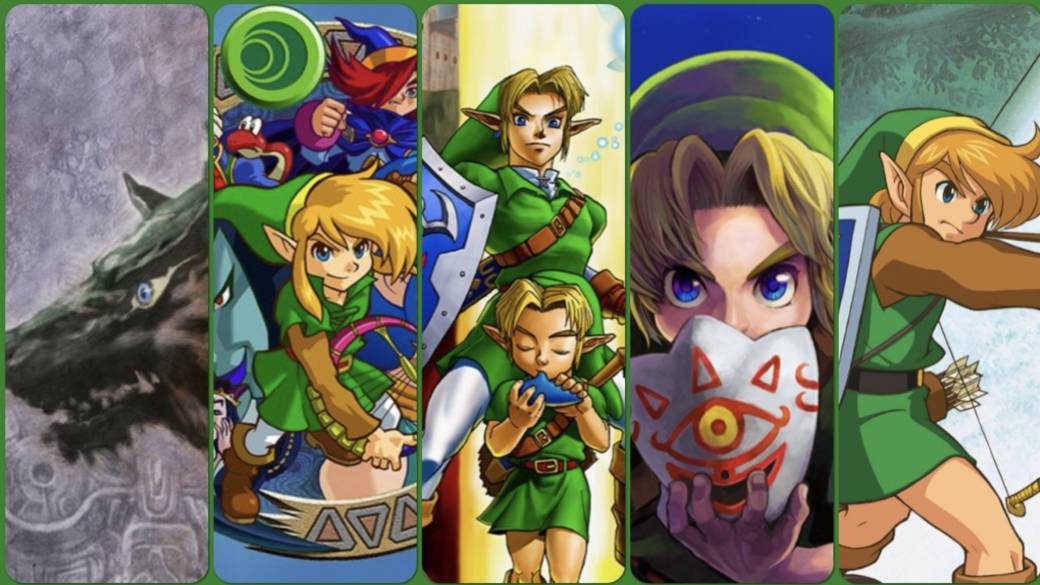
Each one has their favorite Zelda and a preset order. But if you had to make a Top 10, what would they be?
The Legend of Zelda is one of the most important sagas in the video game world. Able to transform the medium with its new installments and to mark a path for the rest to follow, the Nintendo saga does not have the sales of Mario, but it has an almost unmatched prestige when it comes to presenting each game that is published in any from the consoles of the Japanese brand, either on a laptop or on a desktop. The concept of adventure by Miyamoto and Tezuka more than 30 years ago has been reinventing itself according to the moment and the specific context. Who are the best Zelda in history?
The answer does not have absolute truth. As with so many other mythical series such as, without going any further, Final Fantasy or Resident Evil, each one has their favorite games starring Link. And let's not talk about the order in which we place them. The moment in which we play them, the impact that it made us or that game replayed years after that makes us come up with all kinds of feelings end up marking our personal opinion about which The Legend of Zelda is better and who is behind it. In this article we encourage you to offer another one of those personal lists, easily reorganizable according to the prism in which you look. But here we leave a top of the 10 best The Legend of Zelda.
10. The Legend of Zelda: Oracle of Ages
The Oracle of, made up of Ages and Seasons and which were initially intended as more installments, are relevant games within the saga. For the alliance between Nintendo and Capcom, and for introducing us for the first time to Hidemaro Fujibayashi, current director of the series in Breath of the Wild and who premiered with these laptop installments. We could have chosen the complete series, but if you have to choose it is better to stay with Ages, a much more complex game, with much more elaborate pre-dungeon sequences, also more challenging dungeons and some comings and goings through time that are not family members. Although it is best to play them together and discover how they connect with each other.
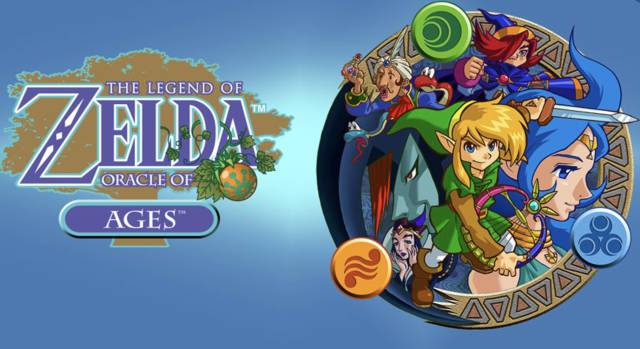
9. The Legend of Zelda: Skyward Sword
Skyward Sword is undoubtedly one of the most controversial games in the Zelda saga and with the greatest ability to polarize users. For some, a masterpiece at the height of the best. For others, a disappointment with a control that was not convincing. The reality is that Skyward Sword represents Nintendo's third and final attempt to beat Ocarina of Time. If Wind Waker tries it through exploration and Twilight Princess through the ladder, Skyward Sword wants to do it through combat. One of the key hallmarks of the saga has always been to exploit the tools that each console offers to each new installment, and Skyward Sword is the game that wants to take control of the wiimote to another level. It offers us a combat full of options and patterns to follow that becomes the axis of the adventure (and offers some of the best sword fights in the series), some unique objects such as the beetle and an intriguing story-level charm for being before the prequel to the whole universe. The presence of some elements such as breakable objects or the energy bar would be exploited later in Breath of the Wild, but they already left their mark in this beautiful game with a touch of watercolor. All this with a different structure than other games, with surprising pre-dungeon zones and some obvious errors, from a tremendously intrusive Fay to excessive linearity for the saga.
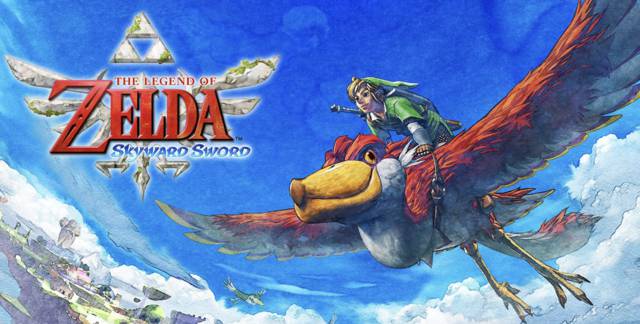
8. The Legend of Zelda: A Link Between Worlds
The Nintendo 3DS game, straddling the tribute, remake and reboot of A Link to the Past, decided to start breaking chains that would later be totally smashed in Breath of the Wild. With the same map -Dark World included- of the Super Nintendo title, Aonuma and company decided to create a new adventure, a much fresher revival with a rhythm rarely seen in the series. The ability to rent objects and therefore use them whenever we want and go to the dungeons in the order we want gave almost absolute freedom to the development benefited by two differential characteristics for the occasion: the first, Ravio's bracelet, which It allowed us to become an oil painting in motion and reach impossible and never seen places. Your input to puzzles in and out of dungeons is key to the game's success. The other outstanding feature, the rhythm and fluidity of somewhat shorter temples, but more intense and with a constant use of our skills. For the memory, the Ice Temple with its ten interconnected floors remains, a use of verticality that is more than interesting and also of perspective, because although it may not seem like it, the game also agreed to take advantage of the 3D so much reviled throughout the Nintendo 3DS life.

7. The Legend of Zelda: Twilight Princess
Twilight Princess responds to the wishes of fans – not minor – that when they saw the technical demo of Space World in the early 2000s, they dreamed of an Ocarina of Time with the graphics and potential of the new Nintendo console. But the one that arrived was Wind Waker, a game that has won over the public over time. Years later it was decided to retake that idea of the most mature and realistic heir to the Nintendo 64 title. The challenge of Twilight Princess was enormous, and it was wanted to respond to it on a scale: everything is much bigger and larger. The color palette, the structure and tone of the adventure, as well as an already adolescent Link at the beginning marked a distance from the previous installments and also a development that overwhelmed by extension and size. You only need to see the first temple (Forest), with huge bridges and rooms. Or the search in large spaces for clusters of light with Link Lobo and the combination of the two worlds. With some of the most spectacular combat (the battle in the skies against Argorok), some of the best bosses in the saga (Babalant, Stallord), and surely the best companion we've ever had, Midna, Twilight Princess is a favorite. for a large part of the public. And they have reasons to spare.
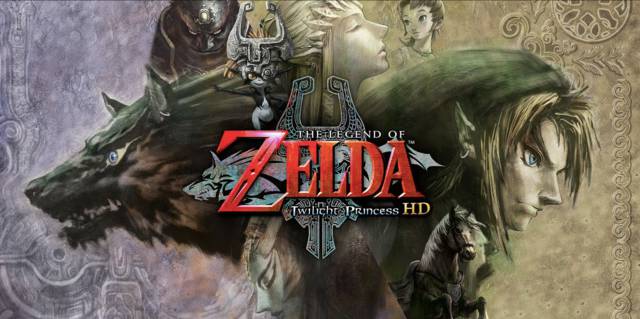
6. The Legend of Zelda: Wind Waker
Surely if we leave aside the debate that can generate the "absentees" in this list, the first great open battle is in which game is better: Wind Waker or Twilight Princess. The reality is that both have enough virtues to get ahead, but here we were left before with Wind Waker and our great journey sailing the seas of the new world. It was a shocking title because of the unexpected -after the Spaceworld of the early 2000s- but also because of how he knew how to reinvent the concept of adventure and how he created an expressive and alive world like few others, to whom the soundtrack with Celtic touches of command de Kondo is one of the best in the series. An expressive Link like never before, an artistic section that endures the type more than 15 years later and the deku sheet as an object that stages that feeling of freedom when it comes to exploring were part of its charm. The exploration took advantage of the dungeons, less present than in other installments, and although it is true that the game suffers in the final stretch for the search for the parts of the triforce (partly fixed in the HD version), it manages to compensate with an epic final battle like few others.
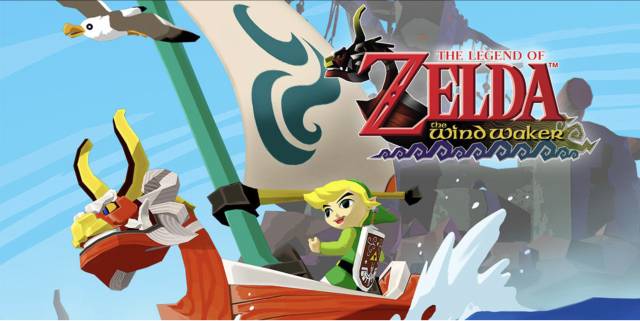
5. The Legend of Zelda: Link's Awakening
We enter the top 5, another of the debates that are easily opened by seeing who is and who is not. In this case, Link's Awakening, the first portable Zelda, is placed among the best in the series and there is no shortage of reasons. What started with an attempt to port A Link to the Past in a portable format ended up in a hilarious world in which several Nintendo members worked in their spare time. A game that its protagonists never thought Nintendo would accept. But he did. Link's adventure in Koholint has a unique sense of humor and features characters from other worlds. Is that Yoshi doll? Don't you look too much like Mario? Have you changed my name to THIEF because I have stolen an item from the store? Yoshiaki Koizumi's hand in the construction of the plot of the Great Fish, of the characters and their interactions, is the first major milestone of this figure that ended up linked to the Mario saga after Majora's Mask. But Link's Awakening not only shines outside the temples: within them it also hits the spot with mechanics such as jumping, 2D phases or surreal final bosses. The good use of the scant Game Boy screen and its transitions is still witchcraft. And it continues to operate at a sublime level today. Let them tell him if not his remake on Switch.
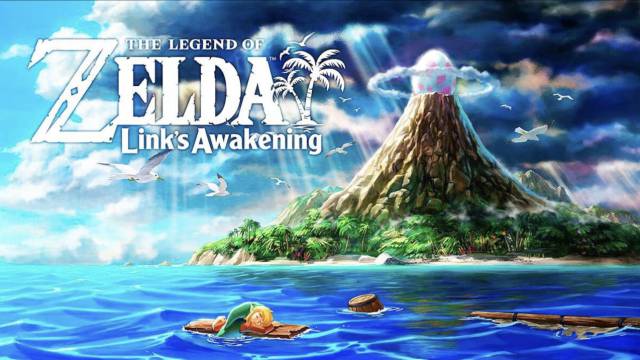
4. The Legend of Zelda: Majora's Mask
Aonuma did not want to get involved in Master Quest or making new dungeons for the Ocarina of Time version because she believed they had done their best. He wanted something new and they gave him a year of time. From the Nintendo 64 game engine and the experience with the title Majora's Mask came out, a direct sequel that narrates the events of Link boy, lost and turned into a Deku boy by Skullkid, a young man haunted by Majora's mask. The radical change of location to Clock and Term City was just the foundation stone of one of the most different – and darkest – Zeldas we've seen. We had 72 hours to save the world from the moonfall, the work of the mysterious mask, and to achieve this we had to play with time, rewinding or advancing according to the moment with our ocarina. The use of time and its pressure offered an anguish that we had to know how to manage. But the best was inside the City. The side missions, work and grace of Koizumi, were of a brilliance never equaled in the saga. We were collecting customs and actions of the characters according to the hours and days. And we helped them and solved their problems thanks to the bomber notebook. Sequences like Kafei's plot are well worth the whole game. Outside, four large temples -this is the work of Aonuma- with transformations thanks to the masks provided by new game mechanics, some of them like the one in the Stone Tower, of a memorable invoice for the use of all the masks and your connections in endless rooms. A demanding game, different – more agile in its 3DS remake – and wonderful.
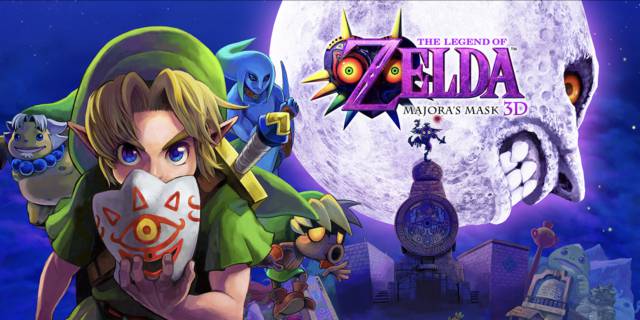
3. The Legend of Zelda: A Link to the Past
The jump that A Link to the Past supposed with respect to the first The Legend of Zelda is one of those that irreparably impacts, since it laid the foundations of the saga and improved absolutely everything that had amazed us with that first installment of NES. The title that begins to introduce the mythology of Hyrule and that establishes the contrast of realities / planes that has always accompanied the saga since then: Hyrule vs Dark World. With him, the dungeons went from a single line of action to several floors where the rooms had different paths to follow and the floors themselves, vertically, also connected. He also played intelligently in what we know as pre-dungeons, the path to the temples. Without the Pegasus boots we could not get the Mudora book, and without it, it was impossible to enter the Desert Palace. That fluidity between inside-outside actions is maintained in an overwhelming title: once we had all three pendants and beat Agahnim, we discovered that we were not done with the game. But it was now when it really started. The soundtrack, the complexity and inspiration of the temples of the World of Darkness and the management of objects that are the basis of the saga did the rest. A timeless Masterpiece.
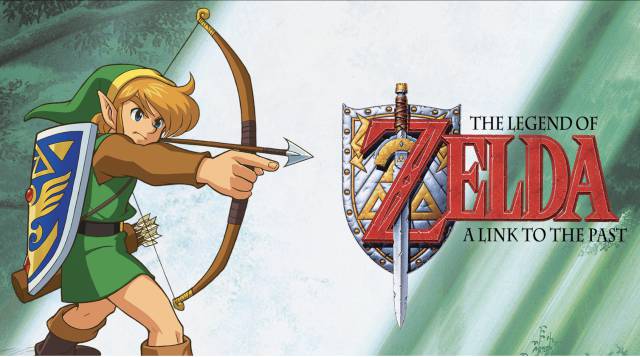
2. The Legend of Zelda: Breath of the Wild
In 2017 came the game that finally broke the chains. We said at the beginning of the report that Nintendo sought to overcome Ocarina of Time through exploration (Wind Waker), a larger scale (Twilight Princess) and combat (Skyward Sword). There is no consensus that he succeeded, although everyone may prefer other games than those mentioned, as is logical. So Nintendo, with Fujibayashi in the lead from Skyward Sword, decided to break with the past. He already flirted with it on ALBW and Breath of the Wild was a total ode to freedom, partly recalling the essence of the first installment of NES and looking for his own way. That freedom of movement is borrowed from the first moment, and it is decided to break the concept of dungeon that marked the development in 3D games, from Ocarina of Time. Here, Hyrule is the great dungeon. Freedom is such that shortly after starting they tell you that Ganon is in the castle and is your goal. Go whenever you want. And the player does something unheard of, escapes his true goal. You don't want to beat Ganon because you don't want him to end.

It also changes the concept of Open World that we met where the challenge begins on a map that indicates absolutely nothing. The NPC that indicates a mission does not mark you on the map where it is. It's up to you to explore it. The world of Breath of the Wild is not a space where you go removing marks of objectives, but it wants that your journey through it is a key playable part, not a transition zone. His freedom also lies in the use of weapons and the skills of the Sheikh stone to create our own path and our way of facing challenges. The weapons are used to, together with the physics engine, let the imagination fly. Solve sanctuaries in unique ways and reach the top of mountains in ways not even the developers imagined. As we upgrade Link's attributes, we hunt and cook and equip ourselves with better weapons and shields. All this with a combat system full of options and versatile like few others while using elements such as wind, fire, ice or electricity in multiple ways. Breath of the Wild broke schemes, and it's true that the absence of large dungeons or those first few hours with short-lived weapons are open to criticism. But Breath of the Wild plays another league. Time will tell if it is the new number 1. At the moment we want to rest it, although sometimes there are many of us who hesitate to give it the throne. But it's the most important game in The Legend of Zelda since Ocarina of Time.
1. The Legend of Zelda: Ocarina of Time
The Legend of Zelda: Ocarina of Time is for many the best game ever, and it is without a doubt one of the most influential games in the video game industry. Nintendo made the leap to 3D with the revolutionary Super Mario 64, but time was advancing and large-scale proposals and productions were emerging that were advancing towards a new concept of video game. Here it was not a matter of moving a platform from 2D to 3D, but of moving what were the great adventures of young boys to epic epics for older adolescents. And that marked an OOT that had a blank canvas before them to create whatever they wanted however they wanted. They were going to be pioneers. The revolution started at the foundation, with key design decisions ranging from the use of lock on so common today for combat, marking an enemy and being able to fight moving around him. Also with an intelligent interaction of our environment: the contextual A button for different actions depending on the moment, or the use of different perspectives such as the first person for the slingshot and the bow with arrows.
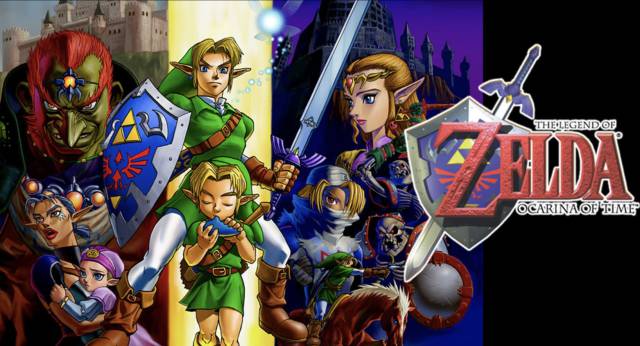
All this, together with the distribution of objects on the C buttons, the camera fixed and in optimal operation most of the time or the automated jumps but not excessively simplified made everything flow perfectly. From this blank canvas that was the concept of 3D adventure some of the best dungeons of the saga were born, capable of playing with different levels, with the ability to identify new secrets by changing the view, interaction with the elements and structures nothing linear. The famous temple of the Water, that in addition to three floors had three levels of water and therefore, multiplied the ways and the options of advance, is the best example.
But Ocarina of Time's special halo isn't found only in the purest gameplay elements. It is also in the world that is presented to us, with its races (goron, kokiris, zoras, gerudos), with the interaction and missions of various characters, from Rancho Lon Lon to the game of masks, passing through exchange missions that will from the simple egg to the Biggoron sword, the use of the day and night cycle present in the game or Epona, the backtracking present thanks to new objects such as the hook and, of course: the game of two realities in the form of present and future. That Link that grows 7 years, the ones that passed between ALTTP and Ocarina of Time. A memorable game, with a unique soundtrack where the music – via ocarina – is also integrated into the gameplay. And where challenges were designed that still today have not been overcome in terms of ingenuity. For many the best game ever and number 1 in the series, for now.

This top has been produced by the Meristation coordinator, Salva Fernández and author of the book "Zelda, behind the legend" and it does not have to coincide with the general sentiment of the Meristation team.

